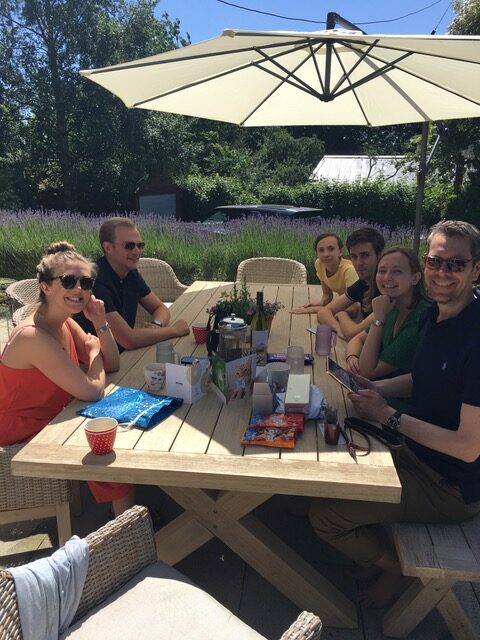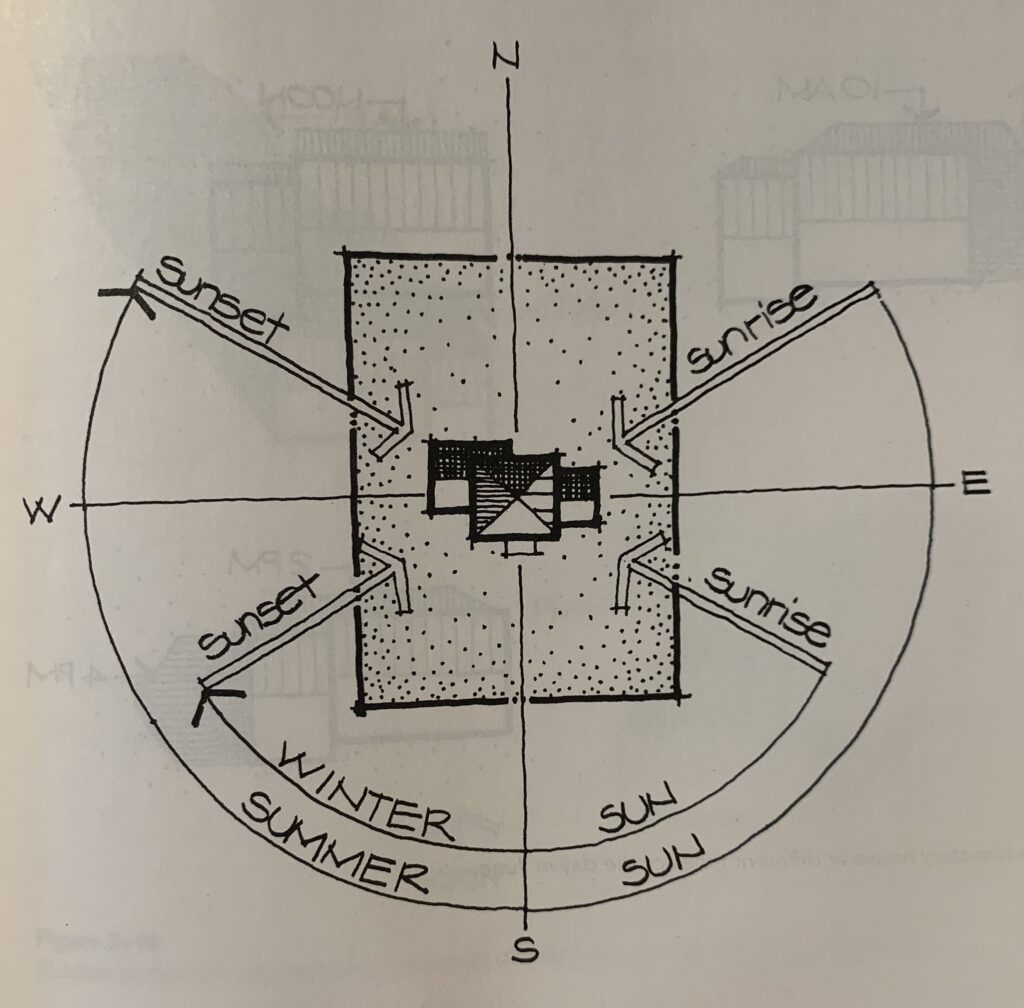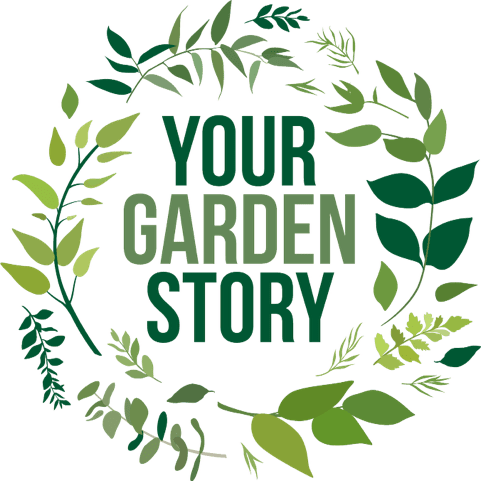We have lived in New York for over 14 years, but every summer, we head to our Victorian cottage, Heatherside, in Wenhaston, Suffolk. It feels like an annual pilgrimage to reset and restore after a busy year in NYC. The contrast to Brooklyn could not be greater. The village of Wenhaston has a population of around 500; Boerum Hill, Brooklyn, nearly 24,000. Wenhaston first existed in 1086, and records suggest the village had a mill, a church, and “woodland sufficient to feed 16 hogs”. Honestly, it seems unchanged other than a small school and village hall. Boerum Hill’s three-story row houses were built in the mid-1800s, and our neighborhood bustles day and night with independent shops, restaurants, and small art galleries with many young families. You can see why the contrast appeals!


It’s funny; you think your kids will forever be young, bundling into Heatherside’s bunk beds on our summer visits, hanging out on a mezzanine in the loft space, racing around the garden playing cricket and football, and happily sleeping 2 to a bed when friends came to stay. And then suddenly, you look around; the kids are the same height as you and are starting to fly the nest. Our kids loved our tiny Suffolk home and were very happy with its haphazard style, furnishings, and somewhat still wild garden (even after the first mini-redesign was complete). The youngest of our four kids is now 17, soon to leave for college, and what has been unique and extraordinary is that our older kids now bring their adult friends to Suffolk; such is its emotional pull. It became apparent that Heatherside would always have a central role in our family, and it was time to create enough space so everyone had their bed. And create a garden that would forever welcome friends and family and we would love and tend to for many a year to come! Selfishly, it has given me the fantastic opportunity to rethink the garden and create the English cottage garden I always dreamed of, in an area of the UK with the perfect climate for that garden style. And so the next chapter began.


So, where to start?
It’s hard to resist the temptation to rush in and start buying plants when you redesign your garden, but taking your time is crucial. Look with an open and curious mind; there are so many possibilities. The best way to start is always to analyze the site, however big or small, even if your space is just a balcony. Ask any garden designer how they approach redesigning a garden and they will have a checklist of criteria to think about . We cover the first two criteria here in this chapter.
1. Sun Exposure
Start thinking about which direction your garden/deck/windowsill faces first since this will determine how much sun it will get. A south-facing garden receives the most sun exposure and will be lit up from sunrise to sunset unless you have large trees or are surrounded by buildings. A north-facing garden gets the least sun and might be shaded most of the day if it’s small and close to the house. If you are east-facing, there is plenty of morning sunlight but less direct sun in the afternoon. And west-facing gardens have less sun in the morning but are full of sunlight all afternoon. The easiest way to determine which way your garden faces is to take your phone compass and stand with your back close to the house. Your compass tells you which way you are facing. Of course, you may also find that the garden faces southwest, southeast, northwest, or northeast. If that’s the case, combine the two sun exposures listed to give you an idea of the conditions. This information is essential when you buy plants since different plants like different sun conditions. You can look up plants online before you head to the nursery to get ideas of what plants might do well in your garden based on the sunlight. For example, shade-loving plants will work well in a north-facing garden, while sun lovers fare much better in a south or west-facing space. Knowing where the sun is in the day is also helpful when you are thinking about where to place a dining table, lounge chairs, or play areas. Lounge chairs set in full sun would work well, but you don’t want your dining table in full sun if you and your guests are going to enjoy long, leisurely lunches outside in the summer. Or if your dining table is in full sun you will want to add an shade/umbrella for those midday sunny lunches.
It’s beneficial to do an elementary sketch of the garden/space and take notes at different times of the day about where the sun is. Do this over a week or so in the summer and get a good idea of where to take advantage of the sun and shade.

Heatherside’s back garden faces northwest, so the back garden had some morning sun and sun again late into the afternoon. However we are lucky that the garden surrounds the whole house, so there is plenty of opportunity to select plants that suit a wide range of sun exposure requirements.
In addition to sun exposure, we had to consider how the weather impacted what plants might grow well. We are close to the ocean, so the garden is often windy. Still, it adjoins heath and woodland on two sides and is well protected, which means generally, the temperature in the garden is higher than in the surrounding area. Microclimates are critical when you think about planting and can work to your advantage. Take a look at how the temperature and wind conditions in your space compare to the local area.
2. Slope/topography and drainage
Is your garden on a slope or relatively level? Look at the degree of slope at different areas throughout the site. How easy is it to walk around the garden? Identify the change in elevation between the top and the bottom of the garden. Will you need to integrate terraces, steps, or a way of linking the differing levels? If the slope is significant, you should ask a contractor for help creating terraces or other ways to manage a substantial change in grade. The grade of the garden also affects drainage. Gardens with significant elevation need good drainage for plants to perform well. In some instances, that can be achieved by creating a rain garden in the area where the water drains away too. And some terrific plants like Bee Balm, Blazing Star and Milkweed love having their feet in the water if you make a rain garden or pond.

At Heatherside, the slope and drainage were significant issues that had never been resolved. There was a significant slope from the top to the bottom of the garden and poor drainage away from the house. In addition, the lack of a pathway meant the lawn was overused and worn out. Building in terraces, a transitional path, new drainage and introducing steps were crucial to the design plan. We also decided to remove the lawn and create a meadow at the highest level of the garden.
The next My Garden Story – Suffolk Chapter III blog will walk you through the next things on your checklist to consider. We will talk about soil, existing plants and vegetation and harnessing your homes features in your garden.
Get in touch
Get in touch if you want more information on items included on my website or need help sourcing plants or containers. Your Garden Story is here to help bring out the gardener in all of us.

